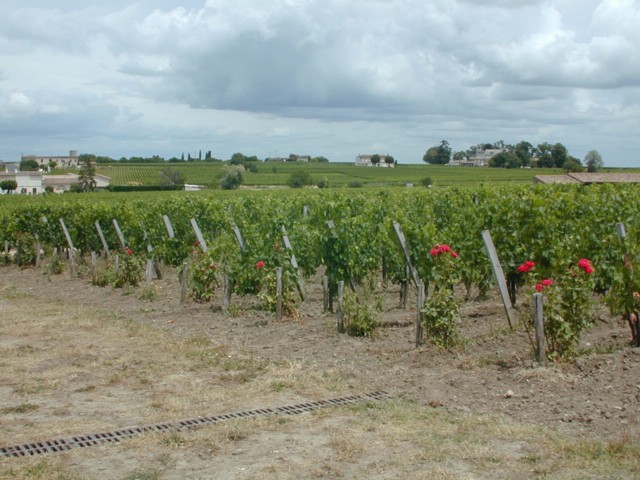

Happy Independence Day! Today was our longest "bus day" of the entire tour, over 250 miles. Much of it was on major roads, but we also spent a fair amount of time on smaller roads between the myriad farming villages here in wine country. We saw many green vistas like this one with roses guarding grapevines in St. Emilion.
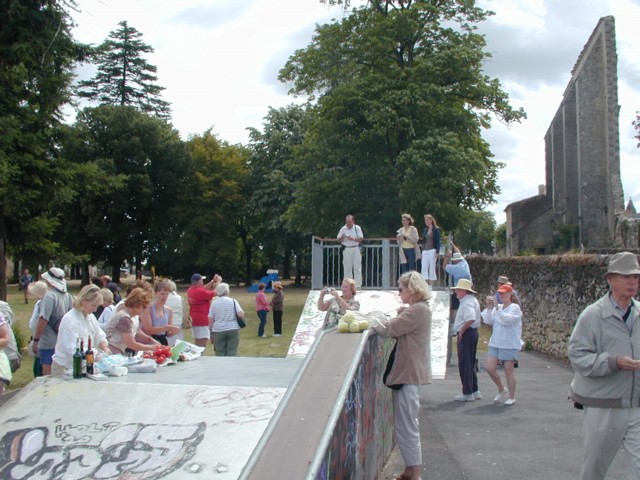
St. Emilion is a UNESCO World Heritage Site, like a couple of others we've encountered on this tour. Specifically, there is an underground complex of monuments that we were originally scheduled to tour. However, we were running significantly behind schedule, so we just stopped to get some food and then to have a nice Fourth of July picnic at the skateboard ramps in a park on the edge of town. A number of us were wearing Stars & Stripes clothes, and Pat had on her Statue of Liberty crown, which was appropriate both for the U.S. and for France!
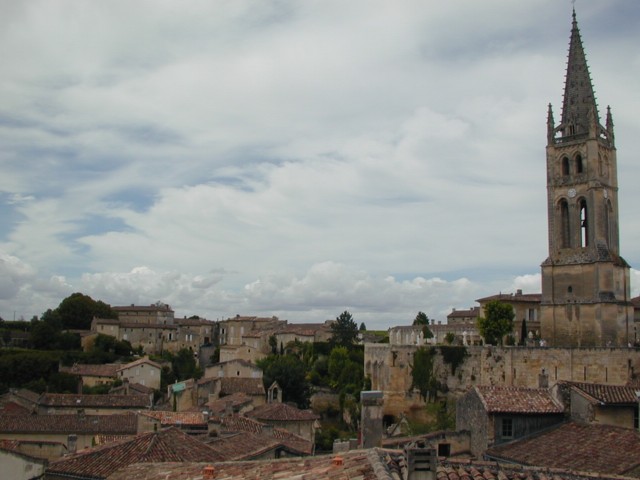
After eating we had a little time to walk into town. Here is a view over the old town toward the main church. I'd like to have known more about the town, the underground monuments, the church, and the wall of the ruined cathedral you saw adjacent to the park a couple of photos up; there were clearly a lot of stories here, but very little time to seek them out.
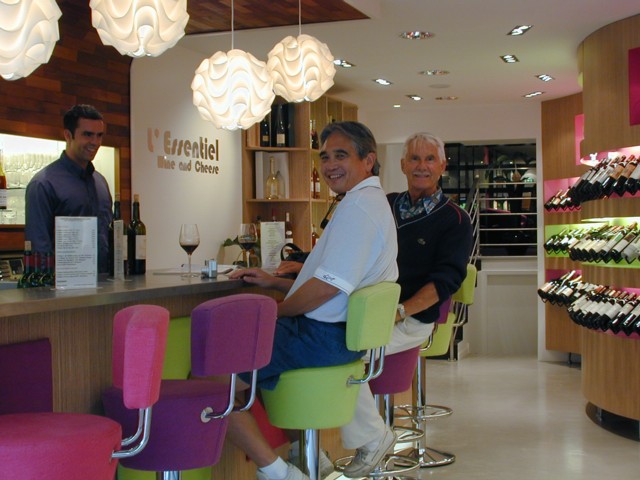
Even in the brief time available, a number of us found our way into one of several wine-tasting shops located on the main street!
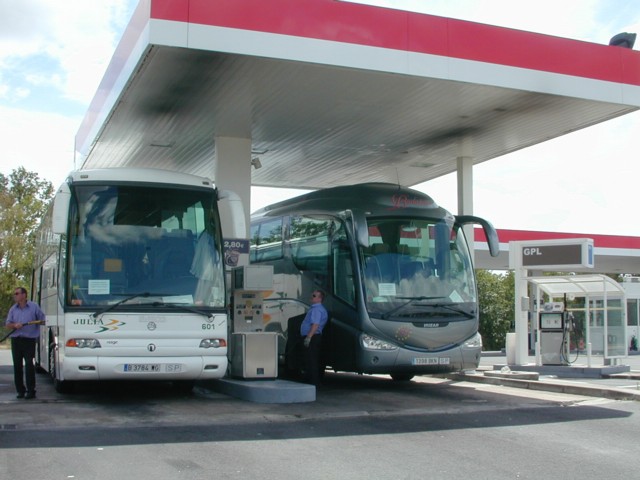
I thought I'd toss in this shot of the drivers filling up our two buses; these are thirsty machines, of course, and make the $50 fill-ups I've started to see with my family's new minivan look pretty paltry! Gasoline here is around $6 per gallon, with diesel about 10% cheaper. The small dispenser just beyond the buses is GPL, or in English LPG, liquefied petroleum gas or propane, which is available at a lot of regular gasoline stations here. Unlike in the U.S., most of the cost of fuel here consists of taxes; LPG is taxed at a much lower rate, and costs about a third less for the equivalent of a gallon of gasoline.
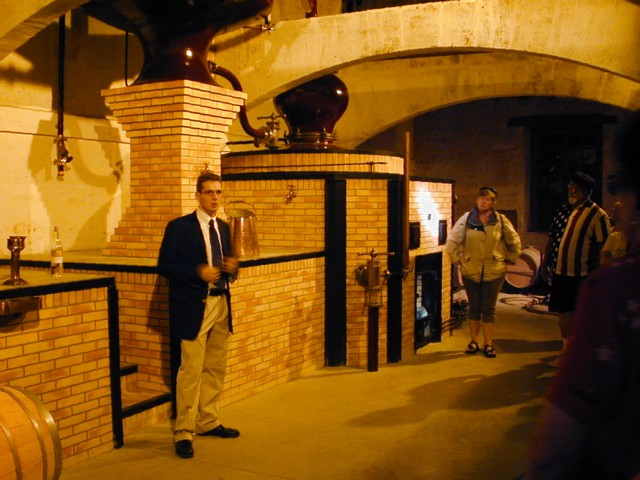
Before arriving in Poitiers, we stopped once more, in Cognac. This is the name of a large town, and of course of a famous brandy (distilled wine); we arrived late again, but at the facility of Martell, the oldest of the distilling companies in Cognac, they were kind enough to stay open late for an abbreviated tour. They have recreated the house of their founder, who came here from Jersey, England, in 1715, and while much of their production has moved to other locations, they have recreated equipment such as these stills to explain to visitors the process of making their cognac. "Cognac" is an Apellation d'Origine Contrôlée (AOC), which means that only distilled spirits made from grapes of certain regions or "crus," and according to certain processes and standards, can be called by that name. The Martell company restricts their purchasing of grapes to vineyards in the four central crus of the six eligible, and they are proud of owning 20% of the growing land in Borderies, whose specific soil characteristics give their cognac the hint of violet that is a signature of the house. All grapes used to make cognac are of an Italian variety, Ugni Blanc, grafted to a pest-resistant American rootstock, but the characteristics of the soil, as well as the time and conditions of aging, impart specific flavors. In 1880 a viral outbreak annihilated the Folle Blanche grapes that had been used for cognac up to that time; that must have been very black year for the region.
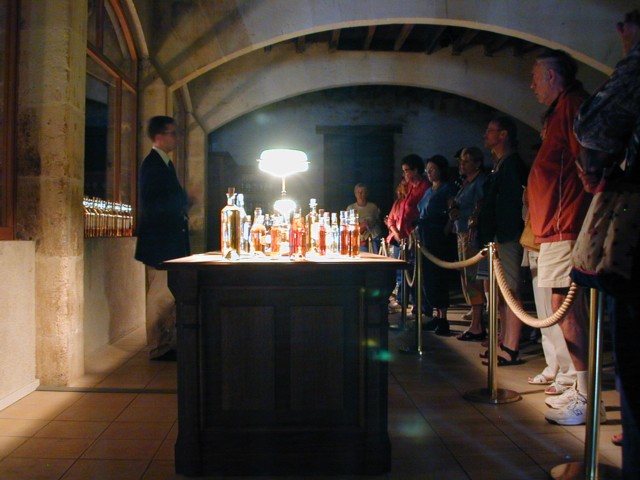
The juice of the grapes is fermented for about a week to make wine, which is then distilled twice over a couple of days to concentrate its flavor and boost its alcohol content to 70% by volume. That's the quick part; it is then sealed into oak barrels to age for anywhere from two to fifty or sixty years! About 2% of the liquid evaporates per year from the barrels; this is known as the "angels' share," and at present production levels amounts to over two million bottles per year! The aged spirit, now down to 40% alcohol content, is known as eau-de-vie (literally, water of life), plural eaux-de-vie; here our guide shows us a small sampling of those available to the Cellar Master. A given eau-de-vie is a unique combination of grape origin, year of harvest, and length of aging; the Cellar Master is responsible for choosing the mix of eaux-de-vie that will go into the mixing vats to create each product in Martell's line. Their largest-volume product, known as VS (for Very Special), is mostly made of grapes from the cru of Fins Bois, which are known for their ability to age rapidly, in just a couple of years; their XO Supreme (Extra Old), which costs six times as much per bottle, includes eaux-de-vie aged for thirty years. A given blend can contain literally hundreds of different eaux-de-vie!
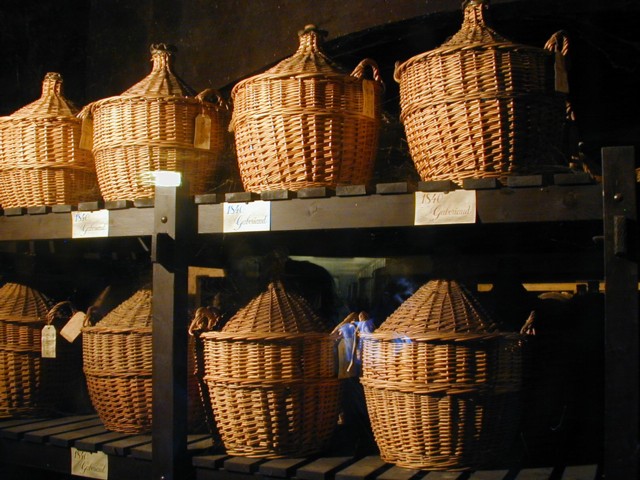
Then there are the limited-edition, ultra-luxury blends that come in crystal decanters with solid gold trim; at the top of the line is L'Art de Martell, of which exactly 1997 bottles were made in 1997 to commemorate the return of Hong Kong from the U.K. to China. A few are still available for purchase... Cognac, once removed from the oak casks, stops aging and has an extremely long shelf life, literally measured in centuries; we were able to see, through a window, the "Paradis," where glass demi-johns wrapped in wicker and sealed with wax are used to store samples of each eau-de-vie, and where there are eaux-de-vie going back to 1830! In addition to being drawn upon to create the limited-production ultra-high end of the Martell line, these serve as a "reference library" for the Cellar Master to ensure consistency of the final products from year to year.
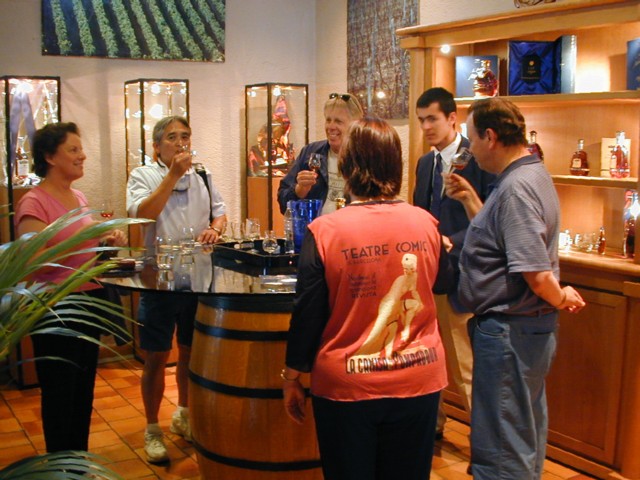
At the end of the tour, or while waiting for one to start, visitors can taste different Martell blends (though doubtless not L'Art!). Many of our folks took advantage of this opportunity, and also bought bottles to take home. I found this a very interesting visit, an introduction to the art behind the science behind the art of making cognac, so to speak.
We then returned to the buses and drove for another couple of hours to Poitiers. Tomorrow we will actually be able to sleep in, for the first time on this tour, to rest up from a long but enjoyable day!
 To
Tuesday, 5 July 2005
To
Tuesday, 5 July 2005 Back
to choir tour itinerary
Back
to choir tour itinerary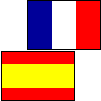 Back
to choir tour home page
Back
to choir tour home pagenew 4 July 2005